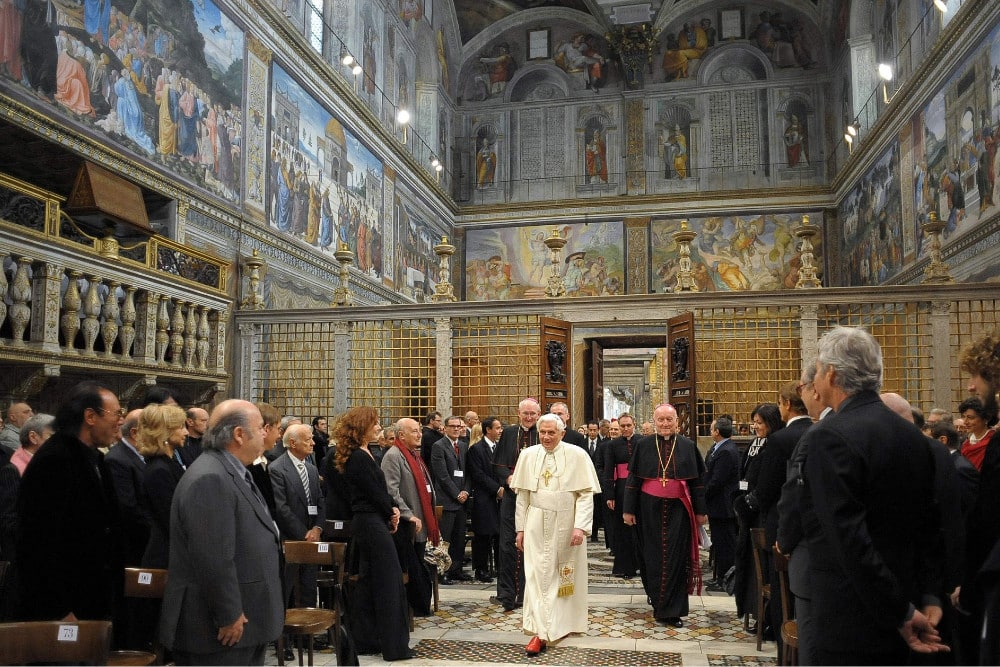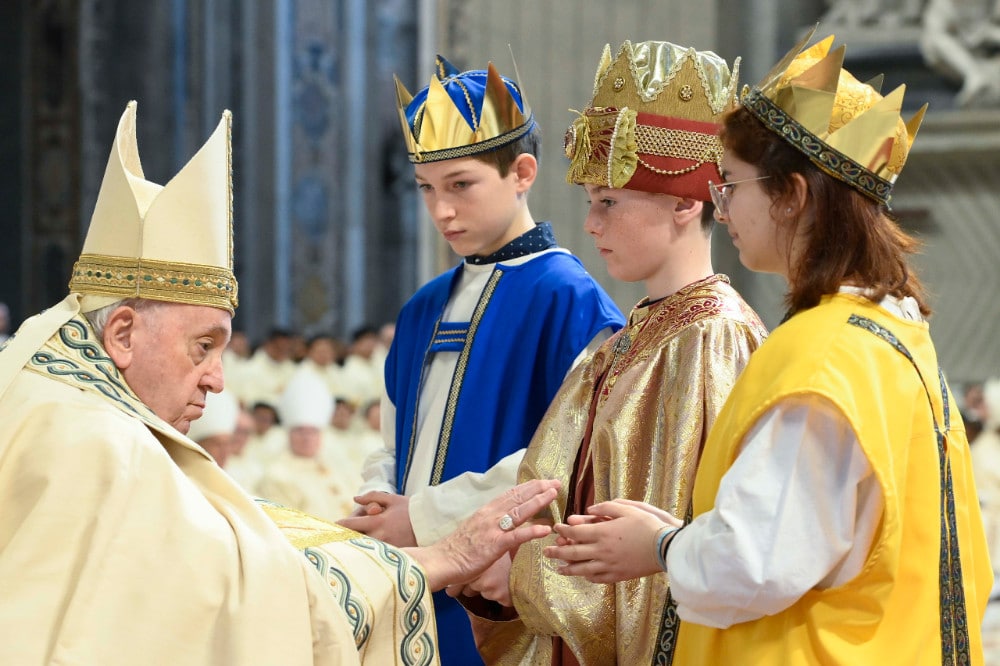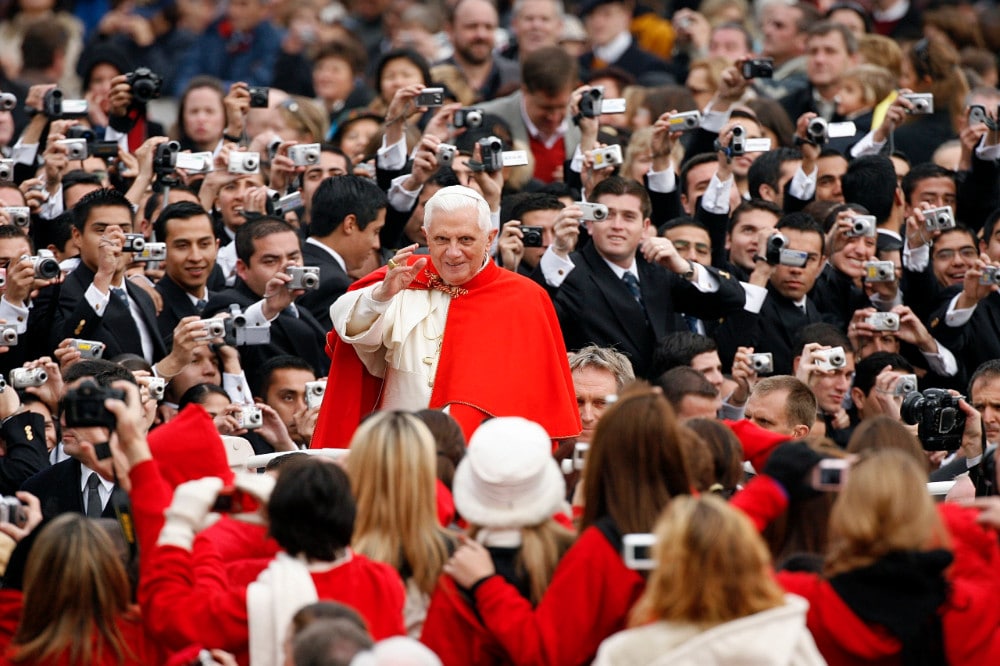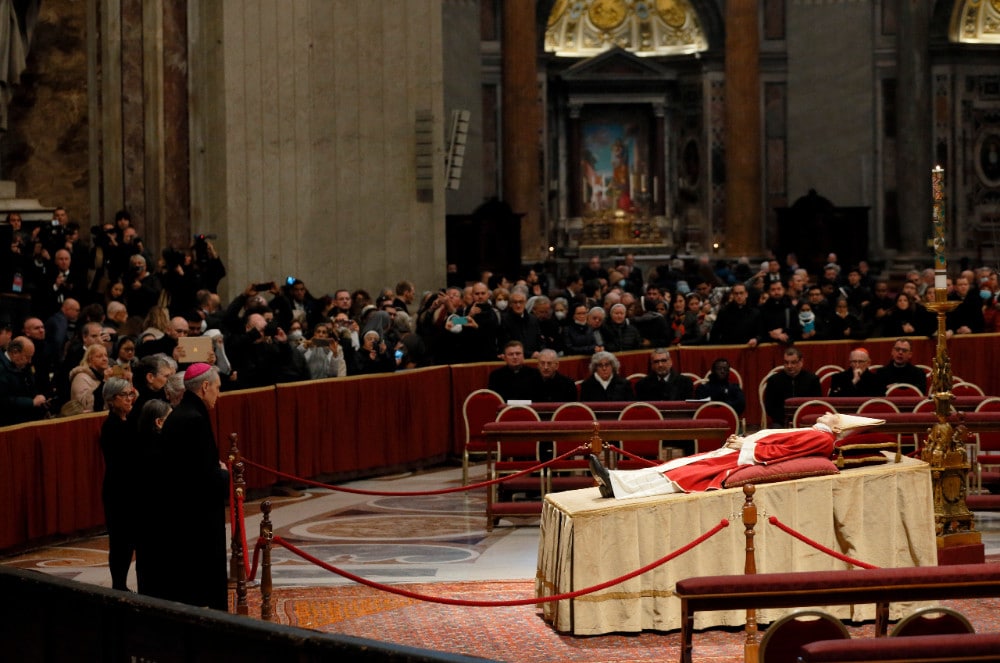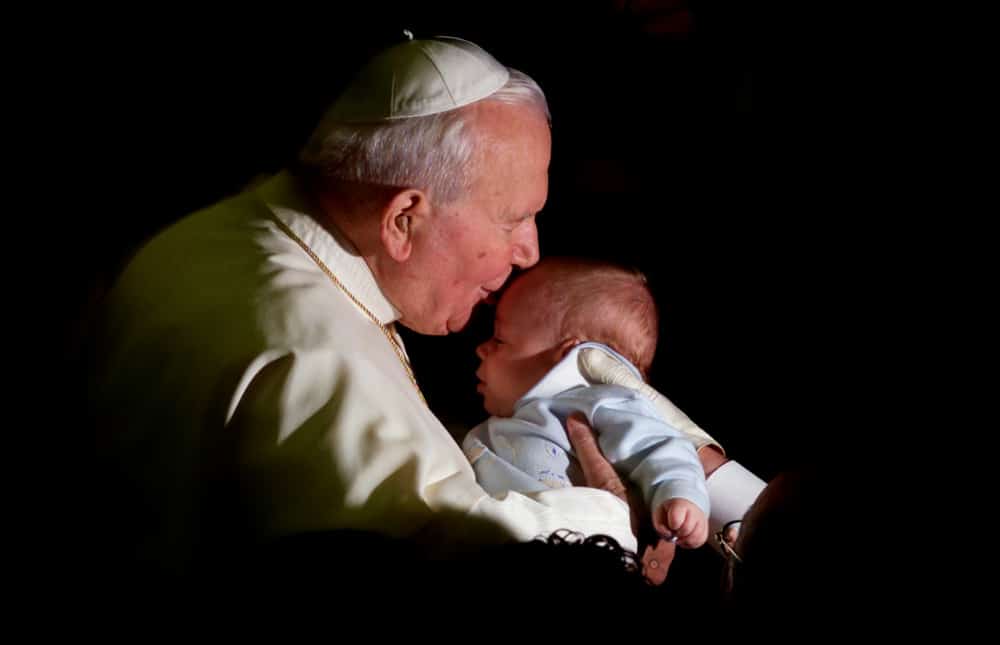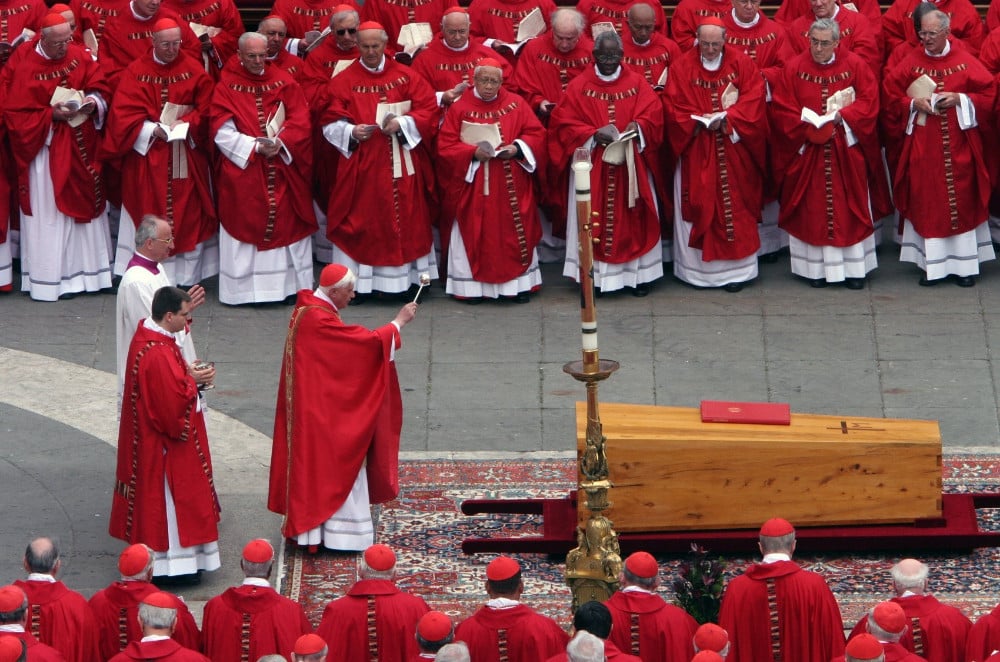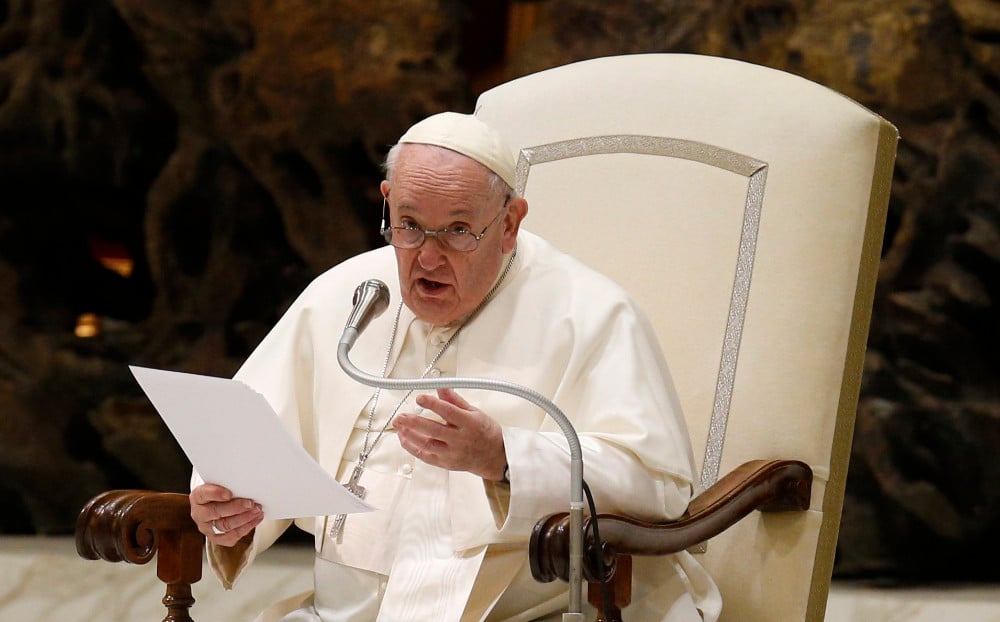Among the many accolades that will be published about the late Pope Emeritus Benedict XVI, we should not overlook his great love for, and encouragement of, the arts. For Pope Benedict, art was not merely a form of leisure, nor simply a respite from the labor of work and worry. Rather, he taught that art and the artist participate in the very creative beauty of God. Thus, art reveals the handiwork of God and, ultimately, has a role in communicating grace to the world.
In August 2008, for example, during a retreat near Bressanone, Italy, Pope Benedict held an audience with about 400 priests of the Diocese of Bolzano-Bressanone for a dialogue on various topics, among which was the role of art in the moral and spiritual lives of the Christian. In response to a question about the relationship of reason to art, Benedict noted: “The beauties created by faith … are … the living proof of faith. If I look at this beautiful cathedral – it is a living proclamation! It speaks to us itself, and on the basis of the cathedral’s beauty, we succeed in visibly proclaiming God, Christ and all his mysteries. … All the great works of art, cathedrals — the Gothic cathedrals and the splendid Baroque churches — they are all a luminous sign of God and, therefore, truly a manifestation, an epiphany of God.”
Similarly, “The great music born in the Church makes the truth of our faith audible and perceivable: from Gregorian chant … to Palestrina … to Bach … to Mozart and Bruckner, and so forth.” When we listen to these works, he explained, “we suddenly understand … the Truth is there.”
Great art reveals the logos, the creative and rational Word through which all things were made, Pope Benedict continued. “Christian art is a rational art,” he said, “but it is the artistic expression of a greatly expanded reason. … In a certain way, this is the proof of the truth of Christianity: heart and reason encounter one another, beauty and truth converge.” We are called to succeed in “living in the beauty of truth,” conveyed in large part by art. The artist plays a vital role in communicating this aspect of the truth of God. Without the “intuition that discovers the true creative center of the world, such beauty cannot be born.”
In November 2009, the Holy Father met with a group of about 250 artists to celebrate the beauty of the Sistine Chapel. In his address, he told the artists that they are “the custodians of beauty.” As such, in a very concrete sense, artists participate in the work of evangelization through their participative creation of beauty. Artists “have the opportunity to speak to the heart of humanity.” Thus, he entreated the artists to take seriously their responsibility to communicate the truth of God. “Through your art,” he implored them, “you yourselves are to be heralds and witnesses of hope for humanity!” Christian faith, he continued, “exalts and nourishes” your art; it helps to order art toward the “ultimate and definitive goal.”
Benedict echoed these word in his general audience of Aug. 31, 2011: “Artistic expressions … are true paths to God, the Supreme Beauty.” Works of art, therefore, “nurture our relationship with him in prayer.” Thus enjoyment of art, properly understood, can be “a moment of grace, an encouragement to strengthen our relationship and our dialogue with our Lord.” Great art “invites us to rise toward God.”
Concretely, and as examples of expanding his reflection to literature in addition to music, architecture and painting, Pope Benedict cited, among others, the great Christian novelists Fyodor Dostoevsky and George Bernanos as artists who reflect the truth of God in their work. In “The Brother Karamazov,” for example, the Holy Father explained that Dostoyevsky communicated a true vision of grace and heaven, rightly portraying, in fictional form, the truth of the relationship of justice and grace. And in an interview in 2008, he credited Bernanos (author of “Diary of a Country Priest”) as having “truly determined my personal, theological, philosophical and human development.” Elsewhere, he commended Bernanos for the celebration of the Communion of Saints in his work.
The legacy of Pope Benedict XVI will be discussed and expanded over the next days, months and years. He had a profound and lasting impact on the Church and will ever be remembered for his unwavering witness to the truth of the Faith. Let us pray that now, with Dante’s Beatrice, he has encountered that beauty that moves the sun and stars.
Kenneth Craycraft, an OSV columnist, is an associate professor of moral theology at Mount St. Mary’s Seminary and School of Theology in Cincinnati. Follow him on Twitter @krcraycraft.

